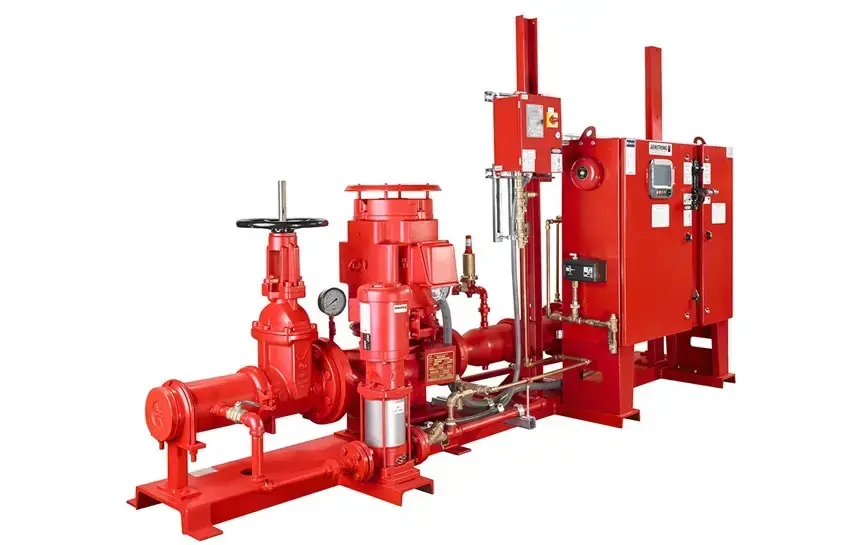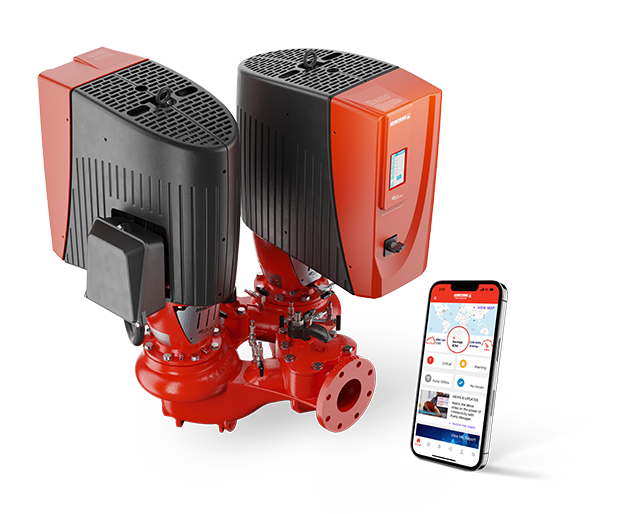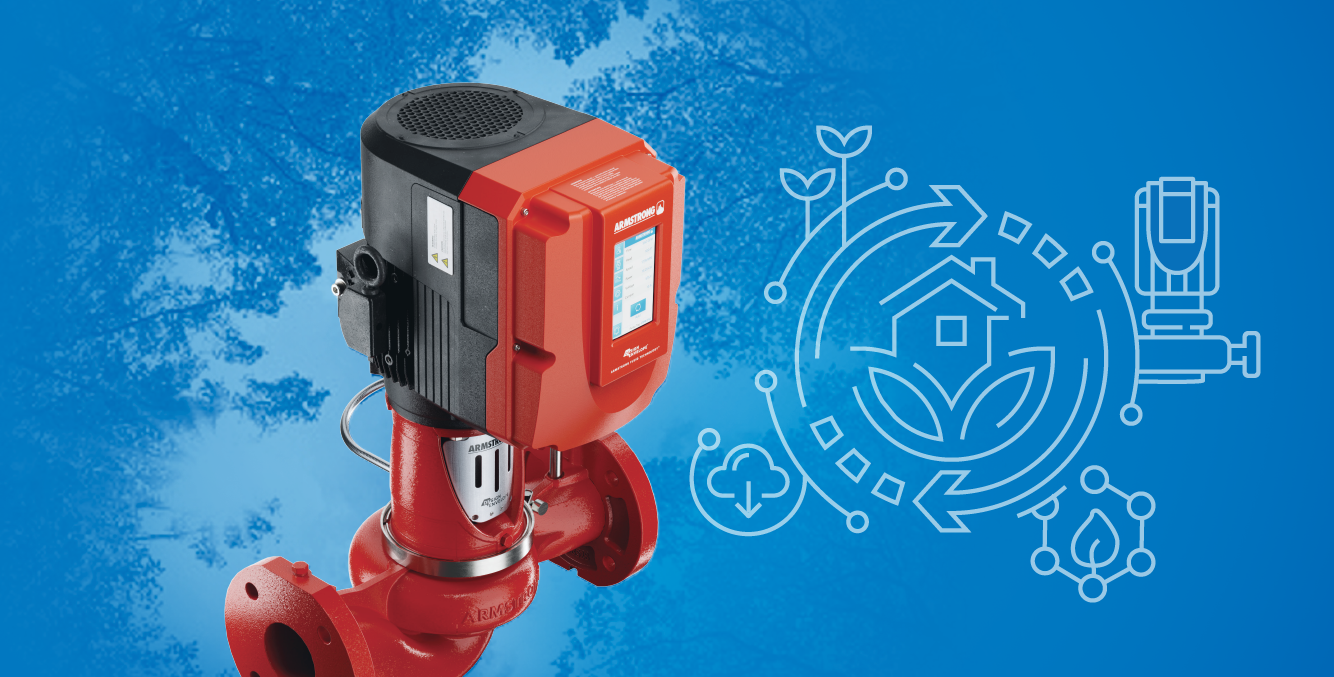Armstrong Fluid Technology
Profile of Vertical Turbine Pumps
Vertical turbine pumps are specially designed to move water from an underground well or reservoir. Water enters the pump through a bell-shaped part called the suction bell. From there it moves into the first stage impeller, which raises the water's velocity. Vertical turbine pumps are typically used in applications where a flooded suction cannot be maintained. These include applications with underground water sources or below-ground tanks with an above-ground pump room.
Read More
Topics:
Fire Pumps,
Vertical In-Line
Vertical in-Line centrifugal pumps are single-stage centrifugal pumps. They are designed for vertical installation with suction and discharge in-line, to provide a smooth flow of liquid through the system. This design aligns the driver, shaft and impeller with gravitational force, so the pumps experience minimal vibration. Vertical In-line pumps serve a wide range of applications, including commercial, municipal and residential high-rise buildings, large industrial premises and storage warehouses, offshore and remote facilities, airports and power stations. Because of their small footprint, they are excellent for industrial applications where space is limited.
Read More
Topics:
Fire Pumps,
Vertical In-Line
This type of centrifugal pump uses a casing design that draws in fluid from the end of the pump and discharges fluid out the top. End suction pumps are almost always single stage pumps, which means they use only one impeller.
Read More
Topics:
Fire Pumps,
End-Suction Pumps
As Seen On: web-release.com Aug 19, 2024
Armstrong has introduced new larger sizes of the Design Envelope Tango, a compact, low-carbon dual pump that ensures uninterrupted service, even during maintenance. The Design Envelope Tango includes two motors and two impeller assemblies in a single casing. Integrated valves can isolate one side of the pump for service, without interrupting flow or affecting occupant comfort. New sizes are now available with motors ranging from 11 to 30 kilowatts (15 to 40 horsepower) and are capable of serving applications up to 160 feet of pressure (2000 GPM).
Design Envelope Tango is a compact solution that com
Read More
Topics:
Design Envelope,
HVAC System,
In The Media
Harmonics are voltage or current waveforms that are distorted from their fundamental sinusoidal shape. They are multiples of the fundamental frequency (50 or 60 Hz) and are generated by non-linear electrical loads. These are loads that draw current in abrupt pulses rather than in a smooth sinusoidal manner. Common sources include:
Read More
Topics:
Design Envelope,
Tango,
Electrical Harmonics
Red Sea Global is one of the world’s most visionary developers, spearheading a new model of development. Leveraging the most innovative technologies, the company seeks to create tourism destinations that not only thrive but also actively contribute to the well-being of people and the planet.
Read More
Topics:
Design Envelope,
Energy Saving,
Energy Upgrade,
Pump Manager
Armstrong Contributes to Expansion of World-Renowned Deep Lake Water Cooling System
It was with a tremendous sense of pride that Armstrong recently attended the official commissioning of the fourth intake for the Deep Lake Water Cooling (DLWC) system, owned and operated by the Enwave Energy Corporation.
Read More
Topics:
In The Media,
Design Envelope pumps,
Chilled Water Systems
As datacenter cooling technology evolves, liquid cooling is emerging as a viable solution to address the growing cooling challenges. The impact of heat on datacenter performance is significant. Excessive heat can cause equipment failures or reduced performance, and in extreme case could lead to a system shutdown. Cooling systems ensure that equipment operates within the recommended temperature range, preventing overheating and extending the lifespan of the equipment.
Read More
Topics:
Data Center,
Energy Saving,
cooling,
Liquid cooling
What is the main cause of water hammer?
In commercial plumbing installations, which often incorporate large diameter pipework and pumped systems, water hammer can be a single destructive event that occurs when a pressure wave rapidly propagates through the pipework. The magnitude of the incident and the reflected pressure waves can sometimes exceed the rated operating pressures of components within the plumbing system. Surges can typically exceed 1.5 times the normal system operating pressure.
Read More
Topics:
Design Envelope,
In The Media,
Air Handling Systems
As seen on web-release.com Jun 5, 2024
Armstrong Fluid Technology MEA marked World Environment Day 2024 with team-building exercises dedicated to cleaning up the local environment.
Read More
Topics:
Sustainability,
In The Media,
Environmental Goals

.png)










